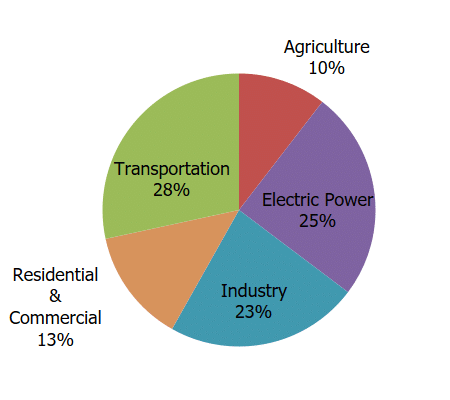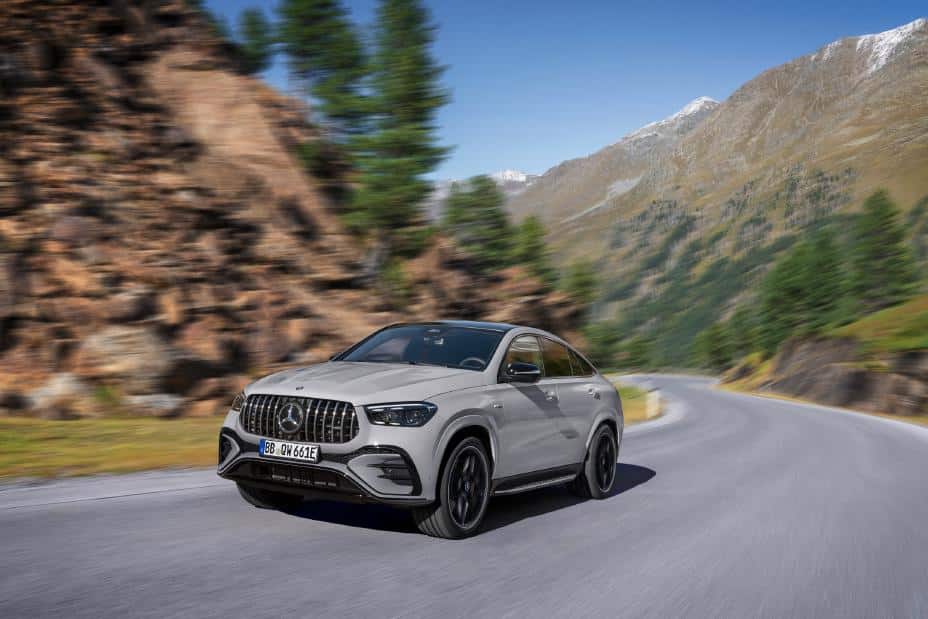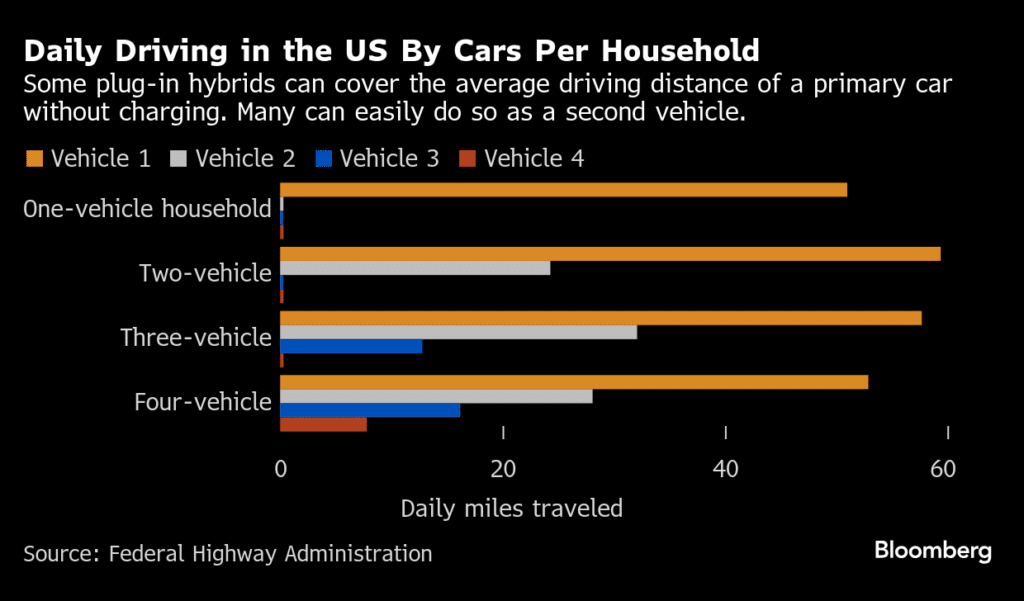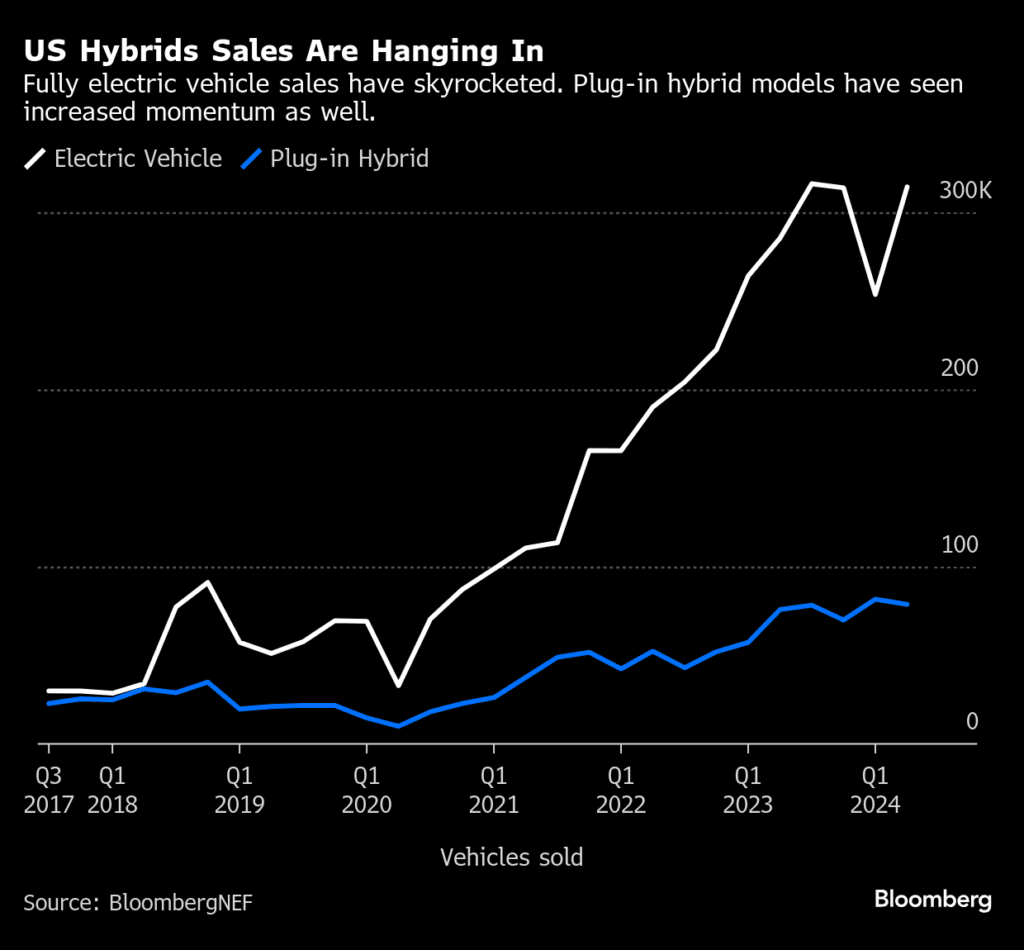Global Gas Vehicle Production Peaked in 2017
The world has hit “peak” gas-powered vehicle sales in 2017, said Colin McKerracher, BloombergNEF’s head of transport and automotive analysis. Since that peak in 2017, gas-powered vehicle sales have dropped 23%. At the same time, BEV and hybrid sales have steadily risen. Climate activists say “good riddance,” as gas-powered transportation creates greenhouse gases, one cause of global human-caused climate change.
In China, hybrid vehicle sales have surged, supported by strong government backing and a growing demand for green technology. China is one of the largest hybrid vehicle markets, driven by both domestic brands like BYD and international manufacturers offering hybrid models.
BYD, China’s largest electric vehicle (EV) manufacturer, achieved record sales of hybrids and EVs worldwide in 2024, driven by strong domestic demand and the success of government-backed trade-in programs. The company reported a total of 4.27 million new energy vehicles (NEVs) sold, representing a 41.26% increase compared to 2023, and surpassing its ambitious target of 3.6 million units. Of these, 4.25 million units were passenger NEVs, marking a 41.07% year-on-year jump.
NEV stands for ‘New Energy Vehicle’ and is a term used to describe all types of electric vehicles, from battery-powered fully electric vehicles to plug-in hybrid cars.
In Europe, sales of hybrids are also on the rise, with many European countries setting aggressive goals to phase out fossil fuel-powered cars. The adoption of hybrids has been particularly strong in markets like Germany, France, and the UK. In the U.S., hybrids continue to grow in popularity, remaining top sellers.
Sources of Greenhouse Gas Emissions
Greenhouse gases, such as carbon dioxide (CO₂), methane (CH₄), and nitrous oxide (N₂O), trap heat in the Earth’s atmosphere, leading to an overall warming of the planet. Human activities, particularly since the Industrial Revolution, are responsible for almost all of the increase in these gases over the last 150 years.
The largest source of greenhouse gas emissions in the United States is the burning of fossil fuels for electricity, heating, and transportation, which contributes significantly to climate change. To track and address these emissions, the Environmental Protection Agency (EPA) publishes the Inventory of U.S. Greenhouse Gas Emissions and Sinks, (1990-2022) an annual report that estimates the total emissions and removals in the U.S., broken down by source, gas, and economic sector. The report showed that the transportation sector was responsible for 28% of greenhouse gas emissions from 1990-2022.

Super-Hybrids Are Automakers’ Bridge to Full BEV
As governments, automakers, and consumers embrace more sustainable practices, hybrid vehicles are becoming a dominant force in the global automotive market. The rising sales of hybrids reflect a growing trend toward greener, more fuel-efficient transportation, providing a key step toward reducing the world’s reliance on fossil fuels and mitigating climate change. Additionally, the advent of plug-in hybrid electric vehicles (PHEVs) is giving buyers more options that bridge the gap between full EVs and traditional vehicles.

BloombergNEF reported via Energy Connects that fully electric vehicles have proven themselves to be very popular and most auto experts expect them to completely take over the industry sometime soon. BloombergNEF expects plug-in sales to peak at 9.2 million in 2030, with nearly four electric vehicles purchased for every one hybrid.
Mercedes is one OEM producing “super hybrids.” The Mercedes GLC 350e’s most remarkable feature is its ability to travel entirely on electric power for up to fifty miles, with its turbocharged, 4-cylinder gas engine merely assisting when needed. This marks a significant step forward in the adoption of super hybrids—vehicles designed for drivers who are EV-curious but not fully committed to going electric.
“You start covering a customer’s daily driving entirely when you get into technology like this, which changes the game,” said Bart Herring, vice president of sales and product at Mercedes Benz USA. The SUV provides 50 miles of electric range, what Herring calls the “magic number.”
The GLC 350e joins models like the Range Rover from Jaguar Land Rover and others that can handle average daily driving distances entirely on electric power, providing an almost emission-free experience while keeping the gas engine as a safety net. While these vehicles come with a premium price tag, there are more affordable alternatives in the Toyota Prius Prime and RAV4 Plug-in Hybrid, which also offer electric range with the flexibility of hybrid power for long trips.

Despite the growing interest in electric vehicles (EVs), surveys consistently show that many drivers, especially in the U.S., remain concerned about electric range, charging infrastructure, and charging speed. As a result, mild hybrids, which don’t require plugging in, have been a popular option in the U.S. for years, offering small efficiency improvements primarily through regenerative braking, though they typically don’t allow for electric-only driving. In contrast, plug-in hybrids (PHEVs), which have significantly larger batteries, offer more substantial green power, allowing vehicles like the Toyota RAV4 PHEV to drive up to 42 miles entirely on electric power, compared to just a mile more for its mild-hybrid version.
The latest super-hybrids, such as the Mercedes GLE, are pushing the boundaries even further, with much larger battery capacities — in the case of the GLE, nearly 24 kWh, which is 28% larger than the RAV4 PHEV’s battery. These long-range hybrids are becoming increasingly popular, particularly in markets like China, where plug-in hybrids can travel up to 60 miles on a single charge. According to Boston Consulting Group, about one-third of U.S. car buyers are interested in long-range hybrids.
Although U.S. EV sales dipped for a short time in 2024 before bouncing back up in the fourth quarter’s EV boom, plug-in hybrids maintained strong momentum.

Jaguar Land Rover doesn’t provide sales data by powertrain, but it says its long-range hybrids have been incredibly popular in recent years. The company’s data show that three out of four of the trips taken in its vehicles can be covered by the brand’s plug-in models, according to JLR spokesman Joe Stauble.
“We’ve been very clear in our commitment to electrification,” Stauble said, namely net-zero carbon emissions by 2039. “However, for Range Rover, we appreciate our clients aren’t ready to make the EV switch overnight.”
Herring at Mercedes emphasizes that long-range hybrid technology is set to become more prevalent in the automaker’s lineup, largely due to the strong sales performance of plug-in hybrids. In the third quarter, U.S. consumers bought three times as many Mercedes plug-ins as the previous year, with about half of those buyers being first-time Mercedes owners. For many customers uncertain about fully electric vehicles, these hybrids serve as an appealing option, offering a balance of electric range and the reassurance of a gas-powered backup. However, Herring notes that while plug-in hybrids are a “bridge” to fully electric cars, they might still be the final destination for some customers, depending on their driving needs.
Meanwhile, Toyota has long been a champion of hybrid vehicles, and its approach to electrification is more conservative compared to other automakers. The company sees plug-in hybrids as an essential part of its carbon reduction strategy, offering consumers the flexibility to choose the battery size that suits their needs, without the significant environmental impact of producing massive EV batteries. For example, the Prius Prime uses a 14 kWh battery to deliver 44 miles of electric driving, while Toyota’s all-electric bZ4X has a 70 kWh battery for a much longer range of 252 miles. Toyota’s strategy focuses on making electrification accessible to a wider audience, helping to achieve emissions reduction goals through a diverse portfolio of vehicles.
EVinfo.net Recommends PHEVs and BEVs
Ideally, drivers should go for BEVs, as they are the most eco-friendly and cost-saving vehicle currently available. However, we at EVinfo.net understand range anxiety may be an issue. For that, we recommend PHEVs (plug-in hybrid electric vehicles), the most eco-friendly and cost-effective type of hybrid. There are few reasons to buy or lease an ICE or HEV (plugless hybrid) in 2025. If you buy or lease a PHEV, don’t forget to plug in, and use electric power for driving as much as possible. Your pocketbook and the environment will thank you.

Electric Vehicle Marketing Consultant, Writer and Editor. Publisher EVinfo.net.
Services